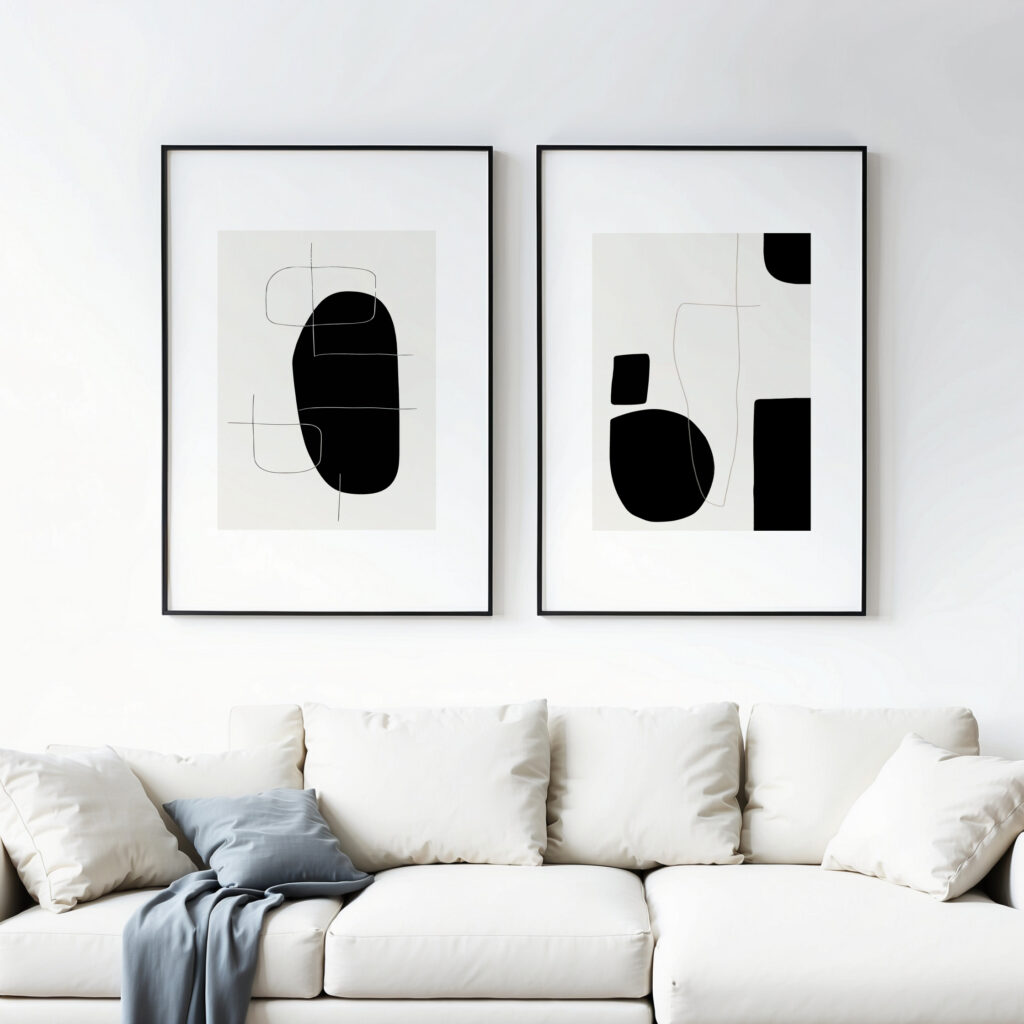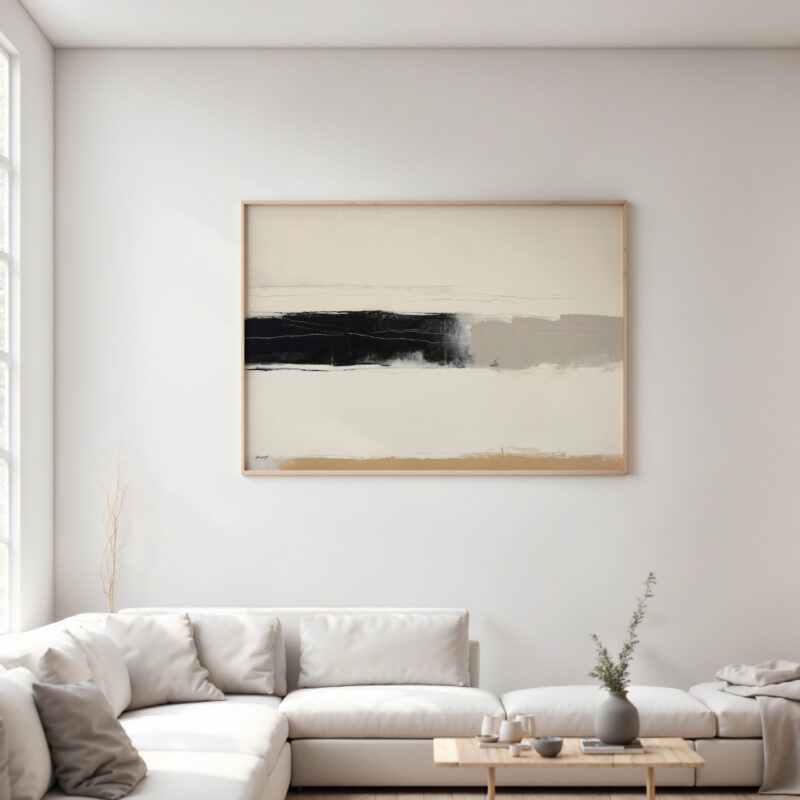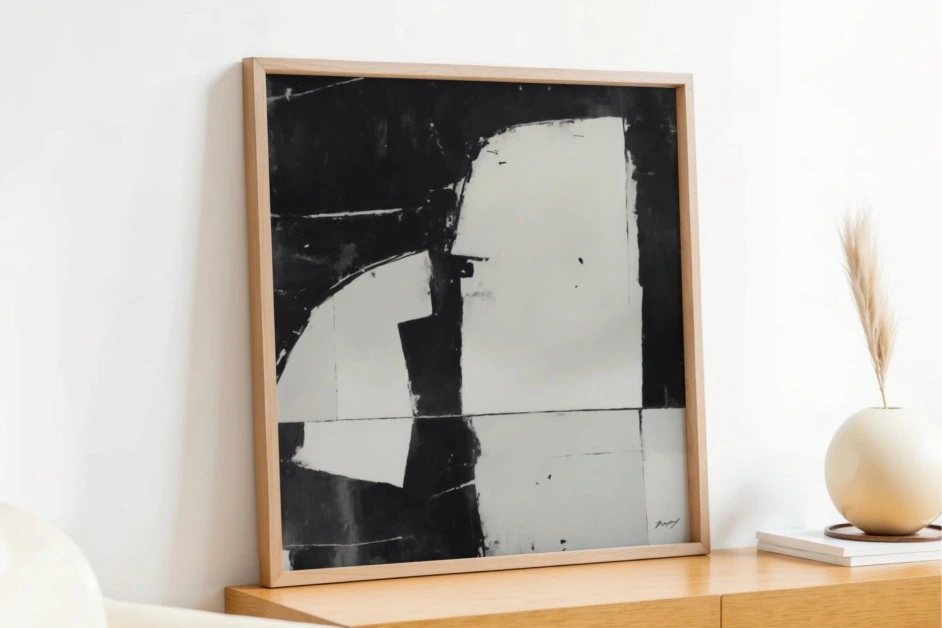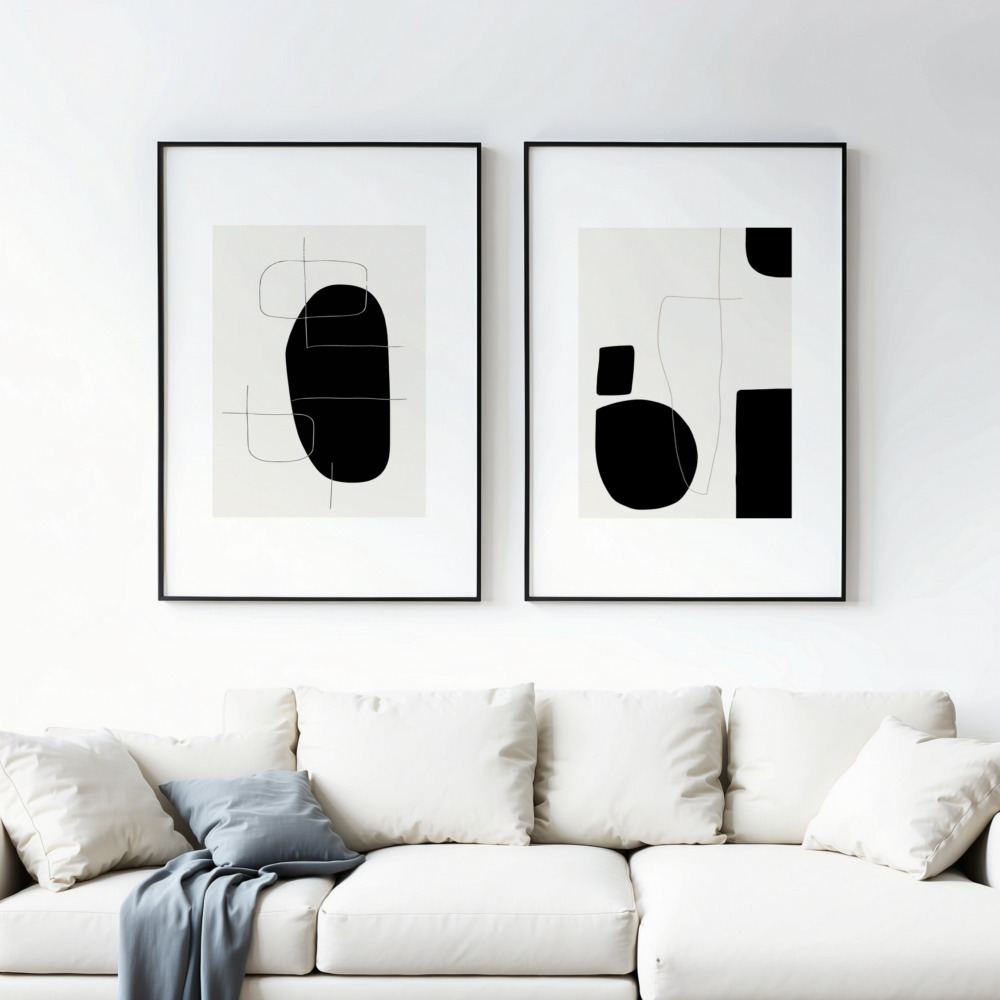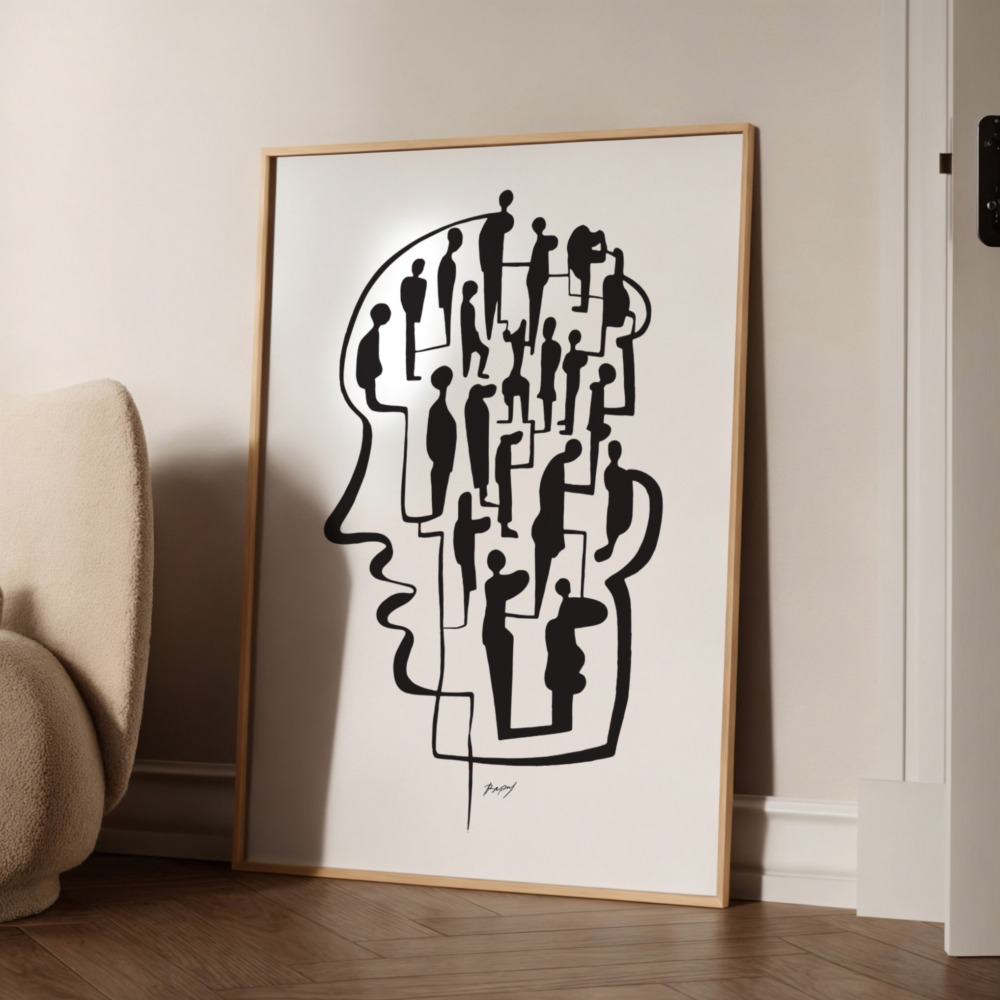You stand before a canvas splashed with seemingly random colors or composed of simple, geometric shapes. A question arises: “What is this really saying?” Modern Abstract art can often feel like a visual puzzle, a departure from the familiar representational world. Yet, beneath the surface of non-objective forms lies a rich tapestry of emotions, ideas, and artistic intentions waiting to be discovered. Understanding how to connect with these seemingly simple designs can unlock a profound and deeply personal art experience.
Unlike traditional art that seeks to depict the tangible world, Modern Abstract art ventures into the realm of pure form, color, line, and texture. It’s a language that speaks not through recognizable imagery but through the fundamental elements of visual expression. While it might initially feel enigmatic, learning to engage with Modern Abstract art involves shifting your focus from “what does it depict?” to “how does it make me feel?” and “what ideas might the artist be exploring through these visual elements?”.
This blog post will delve into the essence of Modern Abstract art, breaking down the meaning behind its seemingly simple forms and guiding viewers on how to connect with these powerful and often deeply emotional designs. We will explore the intentions behind abstract expression, the significance of color and form, and practical approaches to engaging with non-representational art, highlighting stunning examples available when you buy art prints online, allowing you to discover the unique voice and inherent meaning within art, with a curated selection to enhance your space available at Print Studio.
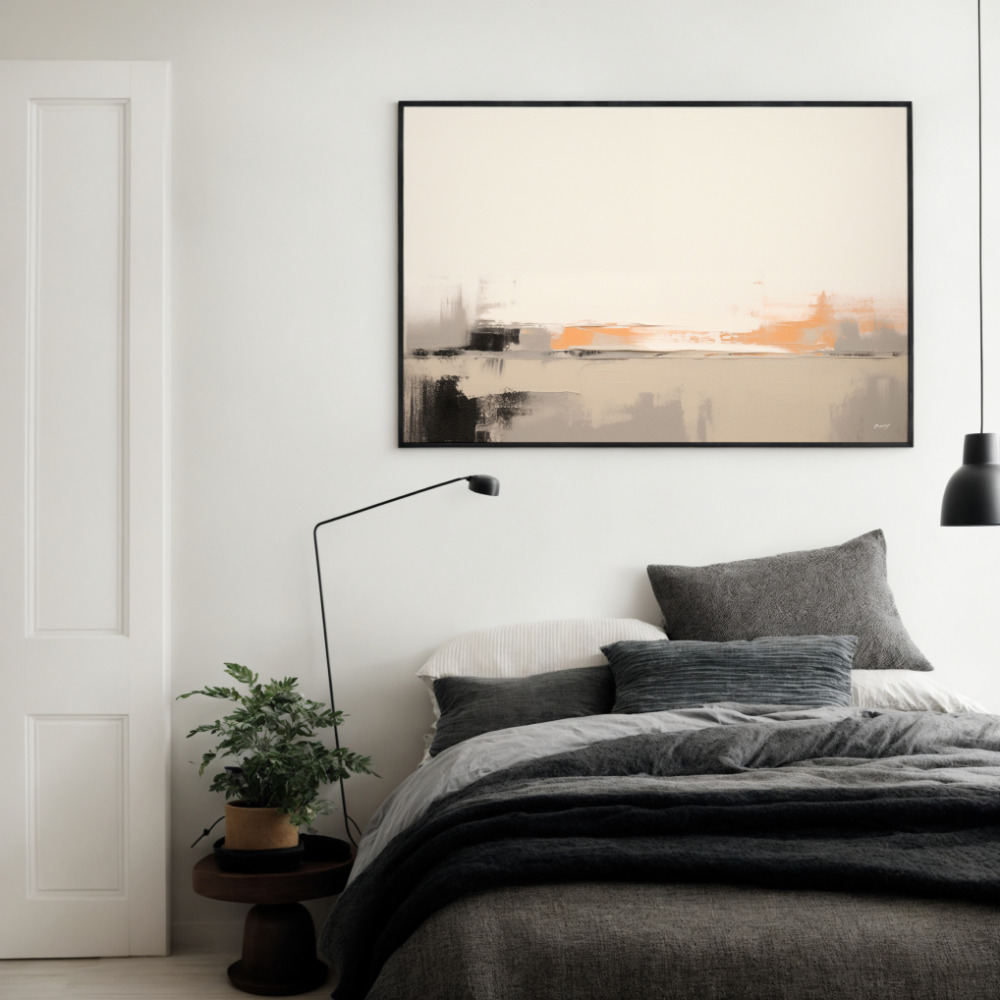
I. The Evolution Towards Abstraction: A Departure from Representation
To understand Modern Abstract art, it’s helpful to trace its historical roots. The late 19th and early 20th centuries witnessed a significant shift in artistic priorities. The invention of photography liberated painters from the sole task of capturing realistic portrayals of the world. Artists began to explore subjective experiences, emotions, and the intrinsic qualities of their materials.
Movements like Impressionism, with its focus on light and atmosphere, and Post-Impressionism, emphasizing emotional expression and symbolic use of color, laid the groundwork for abstraction. Fauvism, with its bold and non-naturalistic colors, and Expressionism, with its intense emotionalism and distorted forms, further pushed the boundaries of representation.
Pioneering figures like Wassily Kandinsky, Kazimir Malevich, and Piet Mondrian took the decisive leap into pure abstraction. Kandinsky, often credited as the father of abstract art, believed that color and form could directly evoke emotions, much like music. Malevich’s Suprematism reduced art to its most basic geometric forms, while Mondrian’s Neoplasticism sought universal harmony through primary colors and horizontal and vertical lines. These artists, driven by diverse philosophies, shared a common desire to move beyond the literal and explore the expressive potential of pure visual language.
II. The Language of Form and Color: Decoding the Visual Vocabulary
Modern Abstract art communicates through a unique visual vocabulary where form and color take center stage. Understanding the potential meanings and emotional associations of these elements can deepen your connection with the artwork:
-
Color: As Kandinsky eloquently argued, color has a direct impact on our emotions. Different hues can evoke a wide range of feelings. Bold, vibrant colors might suggest energy, passion, or joy, while muted, cool tones can evoke tranquility, sadness, or introspection. The way colors interact within a composition – their intensity, contrast, and placement – further contributes to the emotional resonance of the piece. Consider the interplay of colors in the abstract art prints you see online; how do they make you feel?
-
Line: Lines, whether straight, curved, thick, thin, or broken, possess their own expressive qualities. Straight lines can suggest order, stability, and precision, while curved lines might imply fluidity, movement, and grace. Jagged or chaotic lines can convey tension or energy. The direction and rhythm of lines within an abstract artwork can guide your eye and contribute to the overall feeling. Even in black and white art prints, the power of line is undeniable in conveying structure and emotion.
-
Shape and Form: The shapes and forms present in Modern Abstract art can range from simple geometric figures to organic, biomorphic shapes. Geometric shapes might suggest intellect, order, and rationality, while organic shapes can evoke nature, growth, and the subconscious. The arrangement and interaction of these forms within the composition create visual relationships and contribute to the overall meaning or feeling.
-
Texture: Although often perceived visually in two-dimensional art, the implied texture in abstract works can evoke tactile sensations and emotional responses. Rough, layered textures might suggest physicality and intensity, while smooth, blended surfaces can create a sense of calm and refinement.
-
Composition: The way all these elements are organized within the artwork – the composition – is crucial. Balance, asymmetry, rhythm, and the use of negative space all contribute to the overall impact and potential meaning of the piece. A dynamic composition might evoke energy and excitement, while a more balanced composition could suggest harmony and stability.
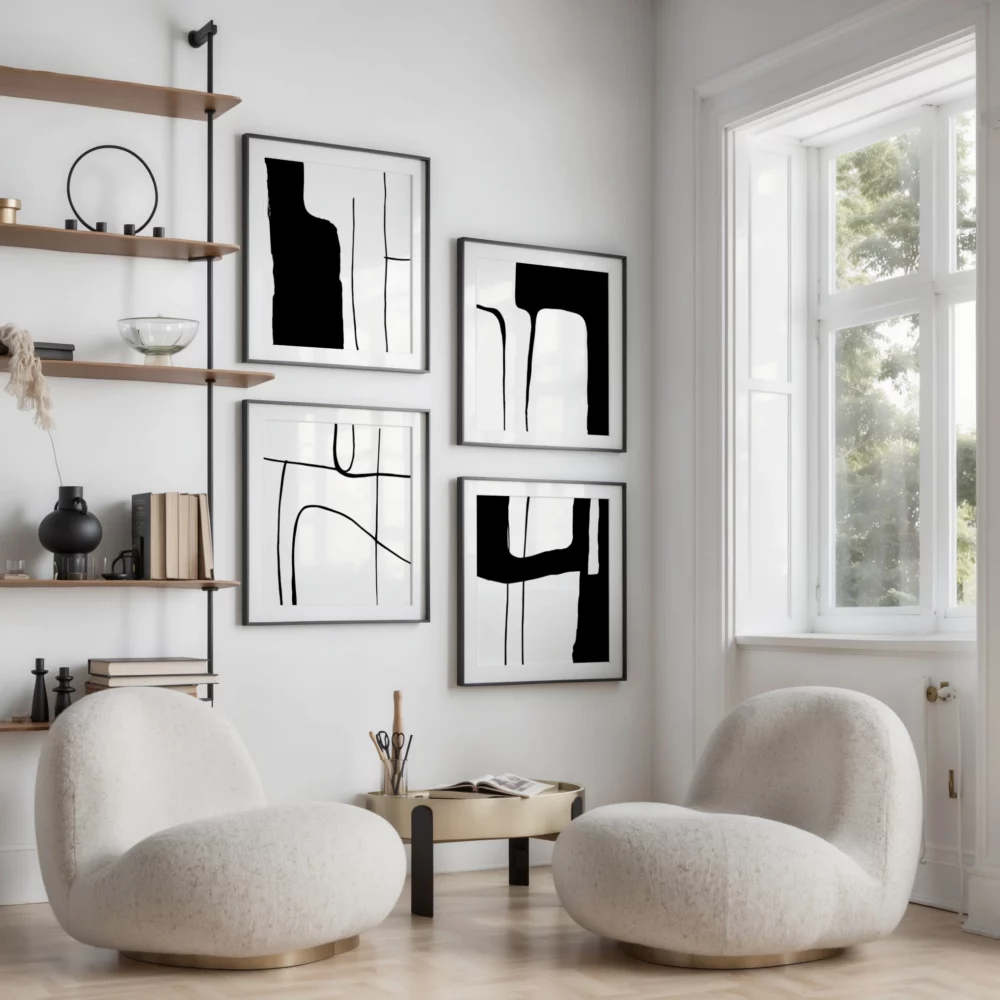
III. Beyond Literal Interpretation: Engaging with Abstract Art
The key to connecting with Modern Abstract art lies in shifting your expectations. Instead of looking for recognizable objects or a clear narrative, try these approaches:
-
Focus on Your Feelings: Allow the artwork to evoke an emotional response within you. What feelings arise as you look at the colors, lines, and forms? There’s no right or wrong answer; your personal reaction is valid.
-
Consider the Elements: Pay attention to the individual elements of the artwork – the colors, lines, shapes, and textures. How do these elements interact with each other? What kind of mood or energy do they create?
-
Look for Patterns and Relationships: Notice how the different visual elements are arranged and how they relate to one another. Are there repeating patterns? Do certain shapes dominate? How does the artist use contrast and harmony?
-
Imagine and Associate: Let your imagination wander. What do the forms and colors remind you of? Are there any associations, memories, or sensations that come to mind? Abstract art often acts as a catalyst for personal reflection.
-
Consider the Title (if available): Sometimes, the title of an abstract artwork can offer a subtle clue to the artist’s intentions or the themes they might be exploring. However, don’t let the title limit your own interpretation.
-
Learn About the Artist and Context: Understanding the artist’s background, their artistic philosophy, and the historical context in which the artwork was created can sometimes provide additional insights, although ultimately, your personal experience with the piece is paramount.
IV. The Meaning is Personal: Embracing Subjectivity in Abstract Art
One of the most liberating aspects of Modern Abstract art is its inherent subjectivity. Unlike representational art where there’s often a shared understanding of the subject matter, abstract art invites multiple interpretations. What one viewer perceives as a burst of energy, another might see as a depiction of inner turmoil. This open-endedness is intentional, allowing each individual to forge their own unique connection with the artwork.
There isn’t a single “correct” meaning to decipher in Modern Abstract art. The meaning resides in the dialogue between the artwork and the viewer, influenced by your personal experiences, emotions, and cultural background. Embrace this subjectivity and trust your own perceptions.

V. Incorporating Modern Abstract Art into Your Space: Creating Visual Interest
Bringing Modern Abstract art prints into your home is a fantastic way to add visual interest, personality, and a touch of contemporary flair to your living spaces. Here are some tips to consider when you buy art prints online:
-
Make a Statement: A large, bold abstract art print can serve as a striking focal point in a living room, dining area, or even a home office. Choose a piece with colors and forms that energize or resonate with the purpose of the space.
-
Create a Gallery Wall with Varied Styles: Combine abstract art prints with other styles, such as minimalist geometric designs or even subtle figurative pieces, to create a dynamic and visually engaging gallery wall. Look for unifying elements like a shared color palette or similar framing styles to create cohesion.
-
Add a Pop of Color: An affordable abstract art print with a vibrant splash of color can be a great way to inject energy and personality into a neutral-toned room.
-
Consider Black and White Abstraction: Black and white art prints with abstract compositions can add a touch of sophistication and drama to any space, offering a timeless and versatile aesthetic.
-
Reflect Your Mood: Choose abstract art prints that reflect the mood you want to cultivate in a particular room. Calming, muted abstracts can enhance a bedroom or study, while more energetic pieces might be suitable for a living or creative space.
VI. Exploring the World of Abstract Prints at Print Studio
At Print Studio, we curate a diverse collection of Modern Abstract art prints, ranging from bold and expressive pieces to more subtle and contemplative designs. Whether you’re drawn to vibrant bursts of color, intricate geometric patterns, or the evocative power of black and white art prints, you’ll find a selection to ignite your imagination and connect with the world of abstraction on a personal level. Our affordable art prints online make it accessible to bring the unique voice of Modern Abstract art into your home.
VII. The Ongoing Dialogue: Abstract Art as a Catalyst for Connection
Modern Abstract art isn’t about providing definitive answers; it’s about initiating a dialogue – a conversation between the artist’s intentions, the artwork’s visual language, and the viewer’s personal experience. By embracing the subjectivity and engaging with the fundamental elements of form and color, you can unlock a rich and rewarding world of artistic expression. It’s an ongoing journey of discovery, where each encounter with an abstract artwork can offer new insights and emotional resonances. So, the next time you stand before a seemingly simple abstract design, take a moment to feel, to imagine, and to connect with the silent yet powerful language of Modern Abstract art.
Begin your personal dialogue with Modern Abstract art today. Explore the diverse collection of abstract art prints, including striking black and white art prints and affordable art prints, available at Print Studio Shop. Discover a piece that speaks to you and unlock your own unique interpretation.

